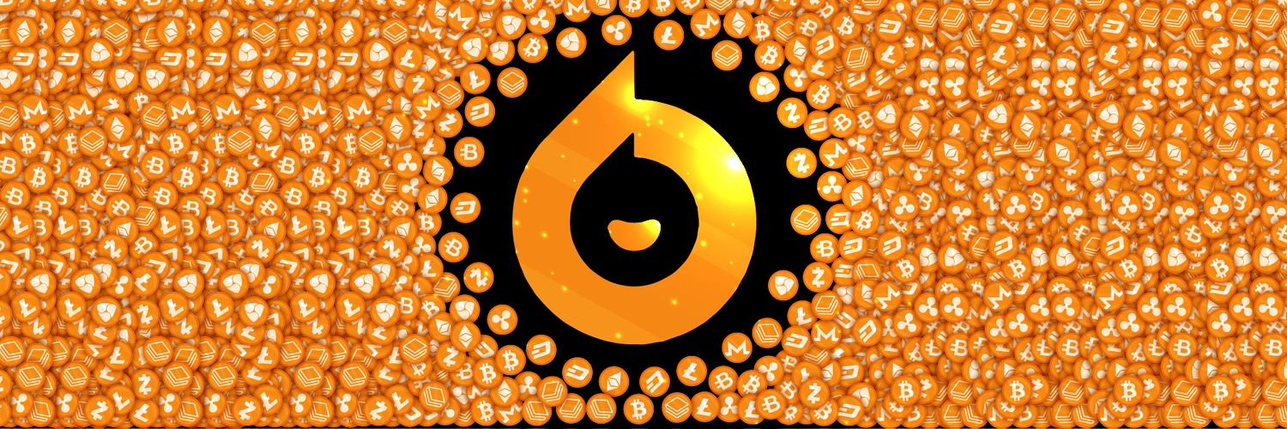


Cena LIKELIKE
Konwerter LIKE na PLN
Czy uważasz, że cena LIKE dziś wzrośnie czy spadnie?
Informacje o LIKE (LIKE)
Kryptowaluty, takie jak Bitcoin, odgrywają istotną rolę w dzisiejszym świecie finansów. Są one dzięki swoim unikalnym cechom i technologii, które je wspierają, wzbudzające zainteresowanie ludzi na całym świecie. W poniższym artykule omówimy znaczenie historyczne oraz kluczowe cechy kryptowalut, skupiając się tylko na jednej z nich - Only1.
Only1 jest cyfrową walutą, która została stworzona w celu umożliwienia bezpiecznej i anonimowej wymiany wartości online. Jest oparta na technologii blockchain, która zapewnia niezmienność i przejrzystość transakcji. Istnieje wiele czynników, które sprawiają, że Only1 ma duże znaczenie w dzisiejszym świecie kryptowalut.
Pierwszym kluczowym aspektem Only1 jest dezentralizacja. W przeciwieństwie do tradycyjnych systemów finansowych, kryptowaluty są oparte na sieci komputerów, które są równoważne w swojej roli. To oznacza, że nie ma centralnej władzy, która kontroluje kryptowalutę, co jest jednym z elementów przyciągających wielu ludzi do tego świata. Only1, jako kryptowaluta, również korzysta z tej samej zasady decentralizacji, co czyni ją atrakcyjną w oczach użytkowników.
Kolejnym kluczowym aspektem Only1 jest bezpieczeństwo. Dzięki technologii blockchain, która jest podstawową metodą obsługi transakcji kryptowalut, Only1 zapewnia wysoki poziom bezpieczeństwa. Każda transakcja jest potwierdzana i zapisywana na wielu węzłach sieci, co sprawia, że jest niemal niemożliwe ją sfałszować lub naruszyć. To sprawia, że Only1 jest jedną z najbezpieczniejszych form wymiany wartości, co jest niezwykle ważne w dzisiejszym świecie online.
Ważnym aspektem Only1 jest również anonimowość. Dzięki zastosowaniu kryptografii, Only1 umożliwia użytkownikom zachowanie pełnej prywatności w swoich transakcjach. Nie ma potrzeby ujawniania swojej tożsamości, co przyciąga osoby, które pragną zachować poufność swoich działań finansowych. Jednak należy pamiętać, że anonimowość musi być wykorzystywana z rozwagą i zgodnie z prawem.
Podsumowując, kryptowaluty, takie jak Only1, mają ogromne znaczenie w dzisiejszym świecie finansów. Zapewniają one decentralizację, bezpieczeństwo i anonimowość, co przyciąga coraz większą liczbę osób. Jednak warto pamiętać, że przed inwestowaniem w kryptowaluty należy dokładnie zbadać rynek i zrozumieć zarówno zalety, jak i ryzyka związane z nimi.
Raport z analizy AI na temat LIKE
Cena LIKE w PLN na żywo dzisiaj
Historia cen LIKE (PLN)
 Najniższa cena
Najniższa cena Najwyższa cena
Najwyższa cena 
Jaka jest najwyższa cena LIKE?
Jaka jest najniższa cena LIKE?
Prognoza ceny LIKE
Jaka będzie cena LIKE w 2026?
Jaka będzie cena LIKE w 2031?
Popularne promocje
Często zadawane pytania
Jaka jest obecna cena LIKE?
Czym jest 24-godzinny wolumen obrotu LIKE?
Jaka jest najwyższa dotychczasowa wartość LIKE?
Czy mogę kupić LIKE na Bitget?
Czy mogę uzyskać stały dochód z inwestycji w LIKE?
Gdzie mogę kupić LIKE z najniższą opłatą?
Posiadane LIKE według koncentracji
Adresy LIKE według czasu posiadania

Globalne ceny LIKE
- 1
- 2
- 3
- 4
- 5
Ceny powiązanych kryptowalut
Ceny nowo notowanych monet na Bitget
Jak kupić LIKE(LIKE)

Utwórz darmowe konto Bitget

Zweryfikuj swoje konto

Konwertuj LIKE na PLN
Kup więcej
Gdzie mogę kupić LIKE (LIKE)?
Sekcja wideo — szybka weryfikacja, szybki handel

Konwerter LIKE na PLN
LIKE – źródła
Tagi:
Oceny LIKE
Bitget Insights





Dodatkowe informacje na temat LIKE
Omówienie monety
O monecie
Informacje handlowe
Aktualizacje monety
Handluj
Earn
BTC/USDT
SpotBTC/USDT
Depozyt zabezpieczającyBTC/USDT
Kontrakty futures zabezpieczone USDTBTC/USD
Kontrakty futures zabezpieczone monetami








Dane z mediów społecznościowych dot. LIKE
W ciągu ostatnich 24 godzin wynik sentymentu mediów społecznościowych wobec LIKE wynosił 0.4, a sentyment mediów społecznościowych do trendu cenowego LIKE wynosił Niedźwiedzi. Ogólny wynik LIKE w mediach społecznościowych wyniósł 158, co plasuje go na 448. miejscu wśród wszystkich kryptowalut.
Według LunarCrush, w ciągu ostatnich 24 godzin kryptowaluty zostały wspomniane w mediach społecznościowych łącznie 1,058,120 razy, przy czym LIKE był wspominany ze współczynnikiem częstotliwości 0%, zajmując 572. miejsce wśród wszystkich kryptowalut.
W ciągu ostatnich 24 godzin było łącznie 0 użytkowników dyskutujących o LIKE, z łączną liczbą LIKE wzmianek o 12. Jednak w porównaniu z poprzednim 24-godzinnym okresem, odnotowano spadek liczby unikalnych użytkowników o 0% oraz wzrost wzmianek o 50%.
Na Twitterze w ciągu ostatnich 24 godzin pojawiło się łącznie 1 tweetów wspominających LIKE. Wśród nich 100% ma bycze nastawienie na LIKE, 0% ma niedźwiedzie nastawienie na LIKE, a 0% jest neutralny na LIKE.
W serwisie Reddit w ciągu ostatnich 24 godzin pojawiło się 0 postów wspominających o LIKE. W porównaniu z poprzednim 24-godzinnym okresem, odnotowano 0% spadek liczby wzmianek.
Całościowy przegląd społecznościowy
0.4